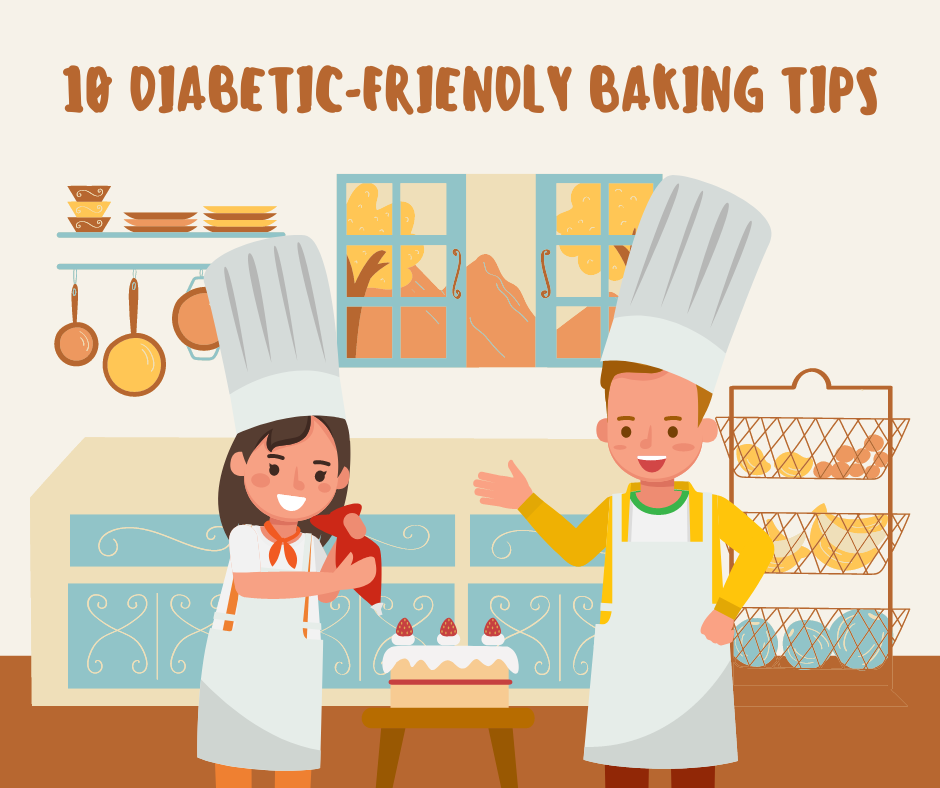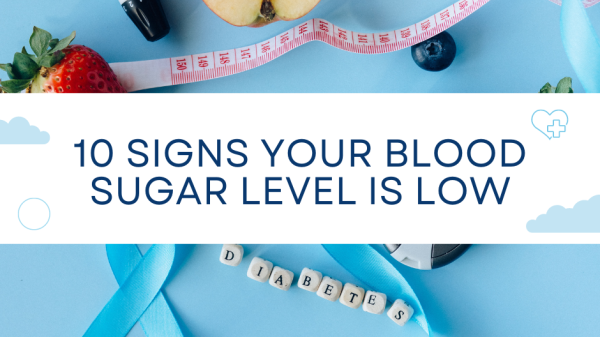

It’s tough living a life that’s not diabetic-friendly when you love baking goodies. Whether you have a massive sweet tooth for cupcakes and cookies or you love anything made out of bread, diabetes throws a wrench in things because now you can’t eat carbohydrates as much as you used to. However, that doesn’t mean you have to say goodbye to baked goodies forever!
Baking can be altered to be perfectly diabetic-friendly. All it takes is a little experimentation and self-control on your part. It’ll take a lot of effort, but at least you can still enjoy a little treat once in a while.
Here are some diabetic-friendly tricks to baking!
1. Replace Unhealthy Fats with Healthy Fats
Butter might make your baked goods taste fantastic, but they’re incredibly bad for you. They’re basically sticks of saturated fat that clog your arteries, making them dangerous for diabetics. Diabetics are twice as likely to develop heart disease as non-diabetics and need to have a heart-healthy diet!
Instead of using butter made of unhealthy fats, you should use healthy fats like olive oil or avocado oil instead. They lower your bad cholesterol while increasing good cholesterol around the body. You can also try nut butter, yogurt, fruit and vegetable purees to get that texture of butter without the butter.
2. Use Natural Sweeteners
Fruits are nature’s sugar. These diabetic-friendly treats can be used in baking goods in place of regular sugar. This way, the goodies you eat won’t just be sweet—they’ll also be filled with vitamins, minerals, and fiber! Fiber will help aid your digestion while vitamins and minerals will build up your defenses against diabetes.
For example, instead of using sugar to sweeten your pancakes, you can use applesauce or mashed bananas instead. It’ll take some experimenting, but trust us—it’s worth it!
Other natural sweeteners you should consider are honey and maple syrup. They’re just as sweet as regular sugar so need to be taken in moderation, but they offer lots of antioxidants that can help your body.
3. Use Artificial Sugar Substitutes
Millions of people around the world suffer from diabetes, which is why the food industry has come a long way to accommodate their sugar-free ways. One such accommodation is making sugar-free sweeteners like sugar alcohols (e.g., xylitol, erythritol), stevia, monk fruit, and more.
What’s great about artificial sweeteners is that there aren’t any calories. Replacing your sugar with fruits is great and all, but there are still carbohydrates you need to be wary of. With artificial sweeteners, you can enjoy all the sweetness without sugar.
The downside, however, is that they’re not the best for baking. Firstly, the taste can be kind of jarring, and since there’s no sugar, there’s nothing to caramelize. The result might not look or taste as great as the real deal. As such, we highly recommend mixing artificial sweeteners with real sugar or real fruit to make up for it.
4. Experiment with Diabetic-Friendly, Alternative Baking Flour
All-purpose flour isn’t the healthiest flour out there for diabetics. Not only is it extremely high in carbohydrates, but those carbohydrates aren’t even healthy. They’ve been processed beyond belief that they lack the fiber, vitamins, and minerals that characterize whole grains.
You should try whole wheat flour instead. Since they’re packed with fiber, they can help control your blood sugar levels since fibers take a while to digest. Other flours like almond flour and coconut flour are also low in carbohydrates—however, they’re high in saturated fats so should only be used in moderation.
5. Try Dark or Unsweetened Chocolate Ingredients
As odd as it seems, did you know dark chocolate is great for diabetics? They help increase sensitivity to insulin and reduce the risk of diabetes among prediabetics. They’re also chock-full of antioxidants that help combat the side effects of diabetes including heart disease and strokes.
However, like many foods out there, dark chocolate needs to be eaten in moderation. Limit yourself to one ounce of dark chocolate with eight grams of sugar maximum. If you’re blending chocolate into your baking batter, try to estimate how much chocolate is in each portion.
6. Incorporate More Vegetables
Vegetables probably aren’t the first ingredients you reach for when making baked goodies, but you’d be surprised at how well they work! You already know about carrot cake and pumpkin pie, but you can also make things like zucchini bread, cauliflower muffins, spinach scones, and green onion pancakes. They add amazing texture to your baked goodies and lots of healthy fiber too.
7. Bake Open-Faced Pies
It might not seem like a big deal, but removing the top of the pie crust makes a load of difference when it comes to calories. You can reduce a sizable chunk of flour, sugar, and butter by simply having an open-faced pie!
It’s best to have fruity, open-faced pies. Ripe fruits are especially sweet, so you don’t need any added sugar for a scrumptious dessert.
If you’re sad about not having a top crust to decorate with, you can always add chopped nuts or cinnamon for some extra flair. You can also decorate with plenty of colorful fruits for a rainbow pie.
8. Eat Smaller Portions
Having diabetes should not stop you from eating your favorite sweet treats. You can still have bits and pieces as long as you eat them in moderation. So, while you can’t exactly eat an entire bucket of candy like you used to do as a kid, you can have a few pieces.
Smaller portions will teach you how to be grateful. You really learn to relish your food and not just gulp it down. You can still eat your favorite non diabetic-friendly baking goods without affecting your health too much!
9. Think Ahead with Meal Plans and Meal Preps
If you want to eat dessert, you need to compensate for that extra sugar by eating less sugar during the day. For example, if you’re excited about tonight’s dessert, you can eat less for breakfast and lunch so you’ll have extra room for dessert by dinnertime.
However, please be reasonable as well. Skipping on carbohydrates the entire day only to consume your recommended intake come dinnertime is dangerous as well since your blood sugar levels will spike significantly. It’s best to just reduce—not cut out sugar entirely!
10. Only Eat What You Love
When presented with a whole buffet of desserts, you need to prioritize the dessert that matters to you. If you really want to eat cheesecake, then cookies, pies, and candy can wait another day. Don’t sacrifice your health for a dessert that’ll still be available any other day.
You should have your priorities when it comes to desserts and your health in check!



